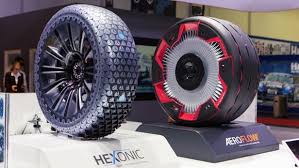
Breaking News
 NonConformist Series: Practical Wealth - Join us virtually Dec 29-30, 2025
NonConformist Series: Practical Wealth - Join us virtually Dec 29-30, 2025
 New bill would allow private citizens to fight cartels: 'WE ARE UNDER ATTACK'
New bill would allow private citizens to fight cartels: 'WE ARE UNDER ATTACK'
 Carnivore Got Me 90% There. This One Drink Changed Everything
Carnivore Got Me 90% There. This One Drink Changed Everything
Top Tech News
 Perfect Aircrete, Kitchen Ingredients.
Perfect Aircrete, Kitchen Ingredients.
 Futuristic pixel-raising display lets you feel what's onscreen
Futuristic pixel-raising display lets you feel what's onscreen
 Cutting-Edge Facility Generates Pure Water and Hydrogen Fuel from Seawater for Mere Pennies
Cutting-Edge Facility Generates Pure Water and Hydrogen Fuel from Seawater for Mere Pennies
 This tiny dev board is packed with features for ambitious makers
This tiny dev board is packed with features for ambitious makers
 Scientists Discover Gel to Regrow Tooth Enamel
Scientists Discover Gel to Regrow Tooth Enamel
 Vitamin C and Dandelion Root Killing Cancer Cells -- as Former CDC Director Calls for COVID-19...
Vitamin C and Dandelion Root Killing Cancer Cells -- as Former CDC Director Calls for COVID-19...
 Galactic Brain: US firm plans space-based data centers, power grid to challenge China
Galactic Brain: US firm plans space-based data centers, power grid to challenge China
 A microbial cleanup for glyphosate just earned a patent. Here's why that matters
A microbial cleanup for glyphosate just earned a patent. Here's why that matters
 Japan Breaks Internet Speed Record with 5 Million Times Faster Data Transfer
Japan Breaks Internet Speed Record with 5 Million Times Faster Data Transfer
Hankook rolls out Hexonic and Aeroflex concept tires at Essen

"This project is part of our effort to find creative and efficient solutions for mobility of the future," said Klaus Krause, Head of Hankook's European Research and Development Centre. And thus he unleashed the wacky Hexonic and Aeroflow concepts.
The Hexonic is focused on self-driving cars, so it's focused primarily on ride comfort for passengers who don't need road feedback or feel. Its tread is broken up into a series of hexagonal modules that appear to be able to split apart to create new channels for water. Each hexagon also has a Y shape in the middle that can push through the smooth surface to add extra grip.
Hankook says the Hexonic tire has no less than seven sensors in it to read, analyze and react to the road in real time, taking things like grip, temperature and the road surface into account. It feels to us like it might be more of a styling exercise than anything else.
On to the Aeroflow, then, a maximum downforce tire aimed at motorsports. It's a wide body with a fat slick tread that can separate in the middle to become much wider, and suck incoming air into a turbine impeller, which Hankook says can be "used to generate additional downforce if necessary." We're not exactly sure how that's supposed to work, but here's a closer look at the interior of the wheel.
This image seems to suggest more thought has gone into the design than the press release, but it's opaque to us. Aerodynamics in motorsport can be a strange and fragile black magic where all parts of the car work in concert to optimize the use of airflow across a swath of different performance metrics. A concept like this, assuming it's not completely off target, would only work with a car designed to take advantage of it.

 Aluminum Causes Brain Damage
Aluminum Causes Brain Damage Advanced Propulsion Resources Part 1 of 2
Advanced Propulsion Resources Part 1 of 2

